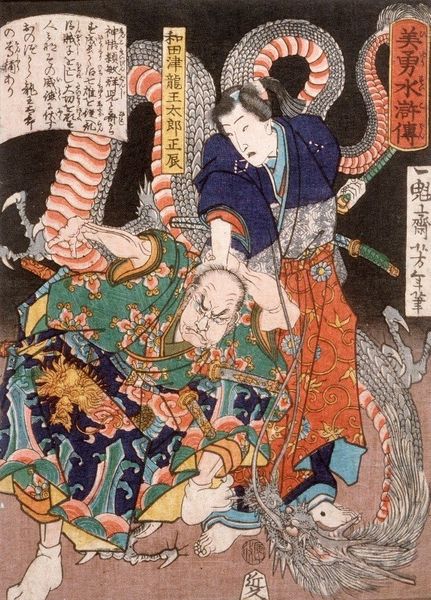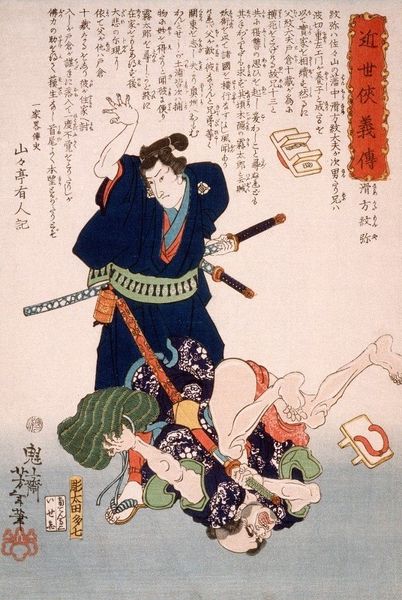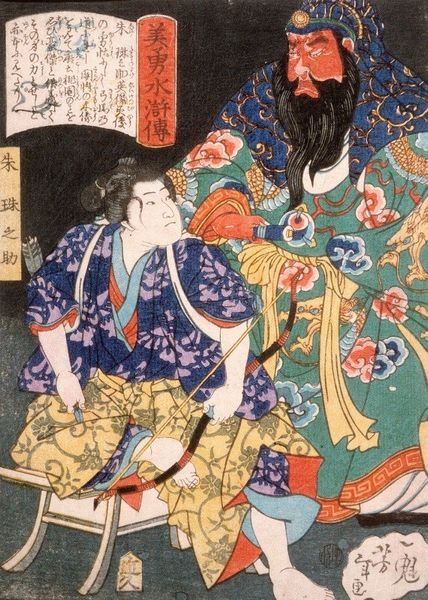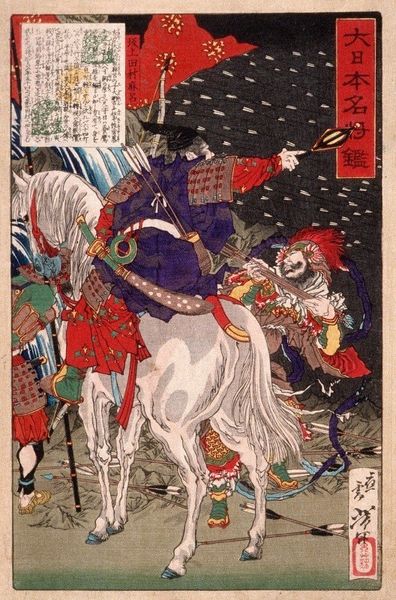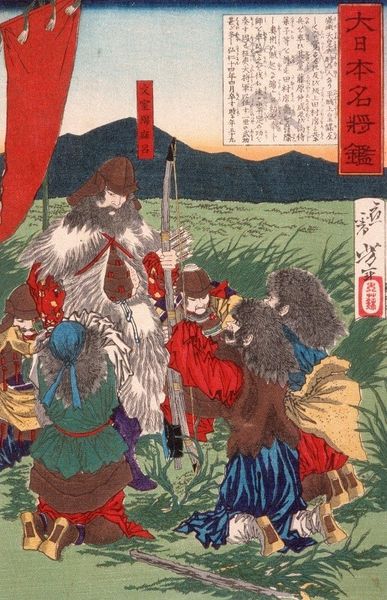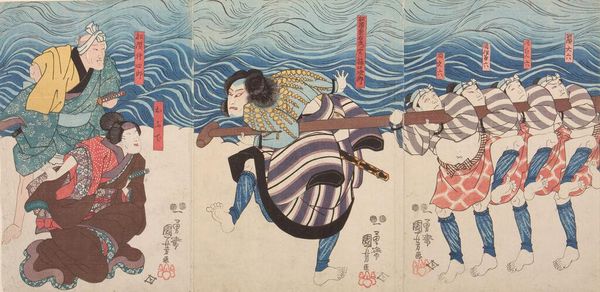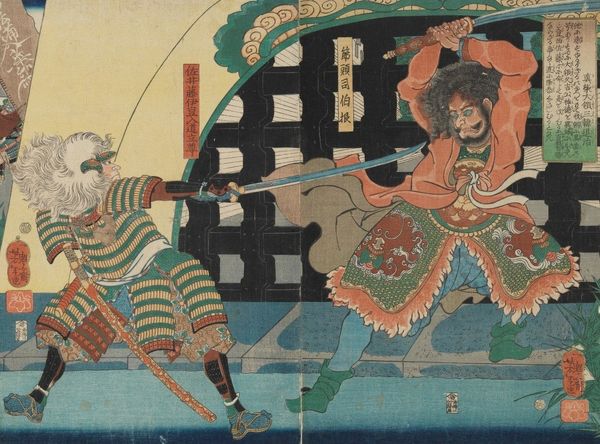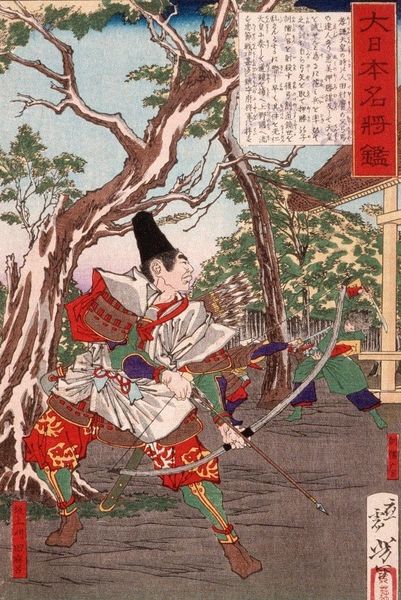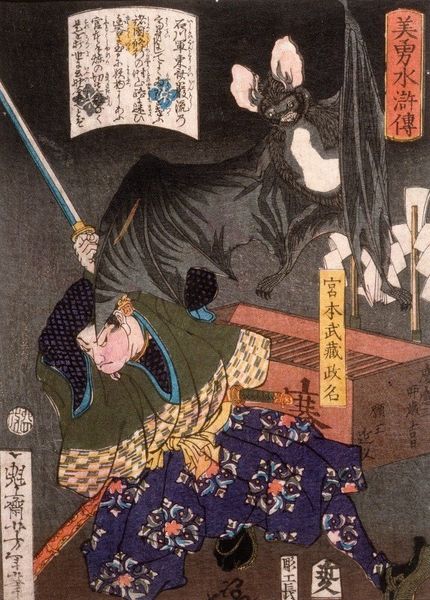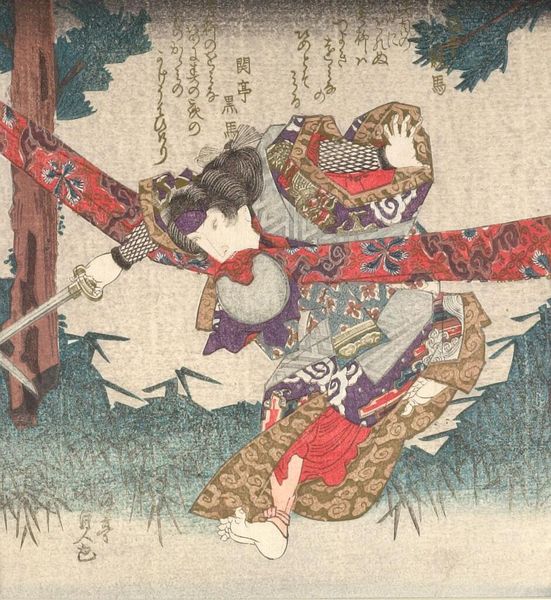
print, woodblock-print
#
narrative-art
# print
#
asian-art
#
ukiyo-e
#
figuration
#
woodblock-print
Copyright: Public Domain: Artvee
Editor: Here we have a woodblock print by Tsukioka Yoshitoshi from 1867, titled "Satomi Jirotarō Yoshinari Inspecting a Head Carried by a Dog." It's rather gruesome, but also…charming, somehow? I'm struck by the almost surreal image of a dog carrying a human head, illuminated by lantern light. What am I missing here? How should we interpret this work? Curator: Ah, yes, a striking piece! What initially reads as gruesome, as you noted, unfolds as something far more layered, like a potent sake after a sweet sip. Think of it as theater, Editor! A *kabuki* scene captured on paper. Yoshitoshi wasn't merely illustrating violence; he was dramatizing loyalty, duty, and even the absurdity of war through the *ukiyo-e* lens. Editor: So, the dog isn't *just* carrying a head? Curator: Exactly. Consider the period—late Edo, social unrest. The samurai code was both revered and questioned. Yoshitoshi, like a street poet, holds up a mirror. The dog, likely an Akita, becomes a symbol, perhaps of unwavering fidelity, contrasting with the moral ambiguities of the time. Note, too, the sharp lines, the theatrical lighting – like a spotlight on a stage. It pulls the viewer in. What story do *you* imagine is unfolding? Editor: I see it differently now – not just a beheading, but a test of loyalty, or perhaps a sacrifice? It makes me question those heroic narratives we so often accept. Curator: Precisely! And that, my dear Editor, is the magic of Yoshitoshi. He doesn't give you answers; he throws open the door to endless interpretations. Each viewing is like uncovering a new layer of history – and humanity. Editor: Thanks! That helps unpack the symbolism and the artistic intention so I now view it in the proper context.
Comments
No comments
Be the first to comment and join the conversation on the ultimate creative platform.
